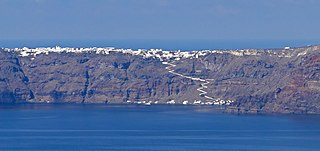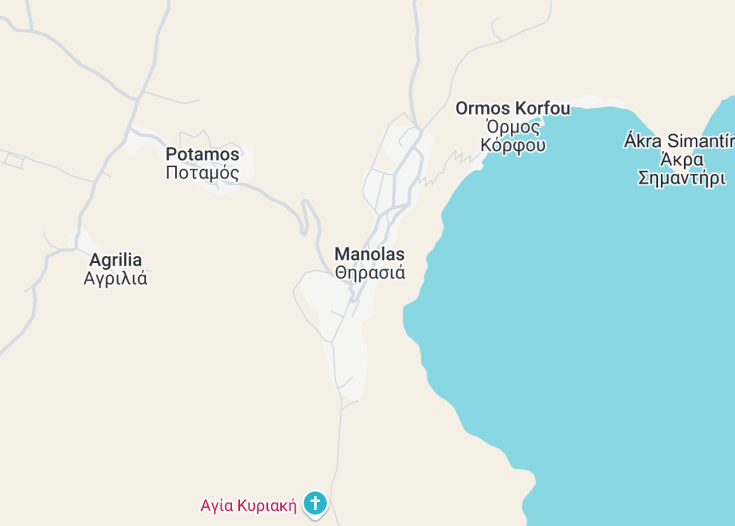Nestled amidst the rugged beauty of Greece’s Aegean archipelago, Manolas is a hidden gem waiting to be discovered. This quaint village on the island of Thirasia, offers visitors an authentic slice of Greek life, away from the more crowded destinations.
Its traditional architecture, stunning cliffside views, and serene atmosphere make Manolas an ideal retreat for those seeking tranquility and a touch of the unspoiled past. Explore ancient pathways, enjoy local cuisine, and immerse yourself in the slow-paced lifestyle of this charming locale.
For the best experience, visit Manolas during the late spring or early autumn to enjoy mild weather and fewer crowds, enhancing the village’s peaceful ambience.
Ensure to try the local seafood dishes at a traditional taverna overlooking the sea, combining authentic flavors with breathtaking views.
Top things to do & see in Manolas
Select the following sights and activities to discover best tickets and tours available in Manolas.
Manolas: The Hidden Gem of Greece
| Country | Greece |
| Time in Manolas | GMT+2 |
| Language spoken | Greek |
| Population | 1,455 (Greek National Statistics Service 2021) |
| Currency | Euro (€, EUR) |
| Airports |
|
Located on the stunning cliffs of Santorini, Manolas is a cliff-top village offering breathtaking views of the surrounding Aegean Sea. Famed for its pristine white houses and blue-domed churches, Manolas epitomizes the classic Santorini postcard vista. This village, though small, holds a substantial place in the heart of its visitors due to its quaint, labyrinthine streets and the quiet, untouched nature of its locale.
Throughout its history, Manolas has maintained a quiet existence, away from the bustle of Santorini’s more tourist-heavy spots like Oia and Fira. It’s a place where tradition is palpable, and residents seem to keep the rhythms of their ancestors’ lives. The village’s charm is its simplicity and the untouched quality that allows visitors to step back in time, experiencing the slow, serene lifestyle that has defined the island’s inner villages for decades.
Manolas is not just a pretty face; it’s also layered with history. Various historical sites nearby tell tales of the island’s past, from ancient ruins to small, forgotten churches filled with religious icons that are centuries old. Visitors often spend their days wandering through these historical vestiges, followed by evenings watching the sun dip below the horizon, painting the sky in fiery hues.
Accessibility to Manolas adds to its charm. The trek to the village can be a mix of a gentle hike or a donkey ride, harkening back to older days and ways of life. Once there, the hospitality of the local taverns invites visitors to taste traditional Greek dishes while overlooking the sea—an experience that is both gastronomically and visually engaging.
In conclusion, Manolas serves as a reflective retreat for those looking to immerse themselves in the quieter side of Santorini’s charm. Its historical significance, coupled with its breathtaking landscapes, makes Manolas a must-visit for anyone traveling to Greece.
Where is Manolas?
Manolas is situated on the northeastern coast of Santorini, Greece, offering stunning elevated views of the Aegean Sea.
Distances:
| Route | Distance by car | Time by car |
|---|---|---|
| Athens to Manolas | Approx. 300 mi (taking ferry) | Approx. 8-10 hours (including ferry time) |
| Thessaloniki to Manolas | Approx. 600 mi (taking ferry) | Approx. 12-14 hours (including ferry time) |
What is Manolas famous for?
Manolas is famous for its extraordinary panoramas, typical Cycladic architecture, and its ability to offer a tranquil escape from the more crowded tourist locations in Santorini.
History
Ancient Origins: Before 500 BC
Manolas, perched on the serene cliffs of Greece, boasts a history steeped in antiquity. The area was first settled by early Aegean civilizations, who were drawn to its strategic maritime location. These initial inhabitants were primarily engaged in fishing and trading with nearby Cycladic islands, setting the foundation for a thriving community.
The Classical Era: 500 BC – 323 BC
This era marked a significant transformation in Manolas as it became influenced by the greater Hellenistic world. The introduction of advanced pottery and refined art from other parts of Greece signaled a cultural blossoming. The town’s architecture began to show distinctive classical features, and it became an important stopover for traders and scholars traversing the Aegean Sea.
Byzantine and Venetian Influence: 330 AD – 1699 AD
The Byzantine period introduced Christianity, forever changing the cultural landscape of Manolas. Magnificent churches replaced many of the ancient temples, adorned with iconic Byzantine mosaics and frescoes. In the later centuries, the Venetians took control, embedding their architectural and culinary influences, many of which are still evident today.
Ottoman Rule and Modern Era: 1700 – Present
With the advent of Ottoman rule, Manolas experienced a mix of cultures and influences, which are reflected in the diverse architectural styles and the cuisine. After Greece gained independence, Manolas became part of the modern Greek state, continuing to thrive as a picturesque village that attracts tourists from around the globe, eager to explore its rich history and stunning landscapes.
Visit Manolas
What to see and do in Manolas, Greece.
The charming village of Manolas is a treasure trove of scenic beauty and historical significance. Visitors can explore ancient ruins that tell tales of the village’s storied past or embark on scenic hikes offering breathtaking views of the Aegean Sea.
Delight in local cuisine at quaint tavernas or visit the beautifully preserved Byzantine churches that dot the landscape.
- Explore the ancient ruins scattered around the village.
- Hike the trails leading to panoramic viewpoints.
- Savor traditional Greek dishes at local eateries.
- Visit centuries-old churches with intricate frescoes.
Cultural Festivities in Manolas
Manolas is vibrant with cultural festivals, particularly in the summer months. The Manolas Art Festival in July features local and international artists, offering workshops and exhibitions. The Feast of St.
Tryphon in August is not to be missed, with its live music, traditional dancing, and sumptuous feasts, celebrating the village’s patron saint.
Best time to visit Manolas
The ideal time to visit Manolas is between late spring and early autumn. May through October offers warm weather, perfect for exploring the outdoor attractions and engaging in local festivals. The peak of summer provides the quintessential Greek island experience.
Is Manolas worth visiting?
Manolas is undoubtedly worth visiting for those who appreciate history meshed with stunning natural landscapes. The village offers a unique glimpse into the diverse cultural influences that have shaped its development over the centuries.
Its tranquil environment, coupled with rich cultural offerings, makes it an ideal destination for travelers seeking both relaxation and enrichment.









